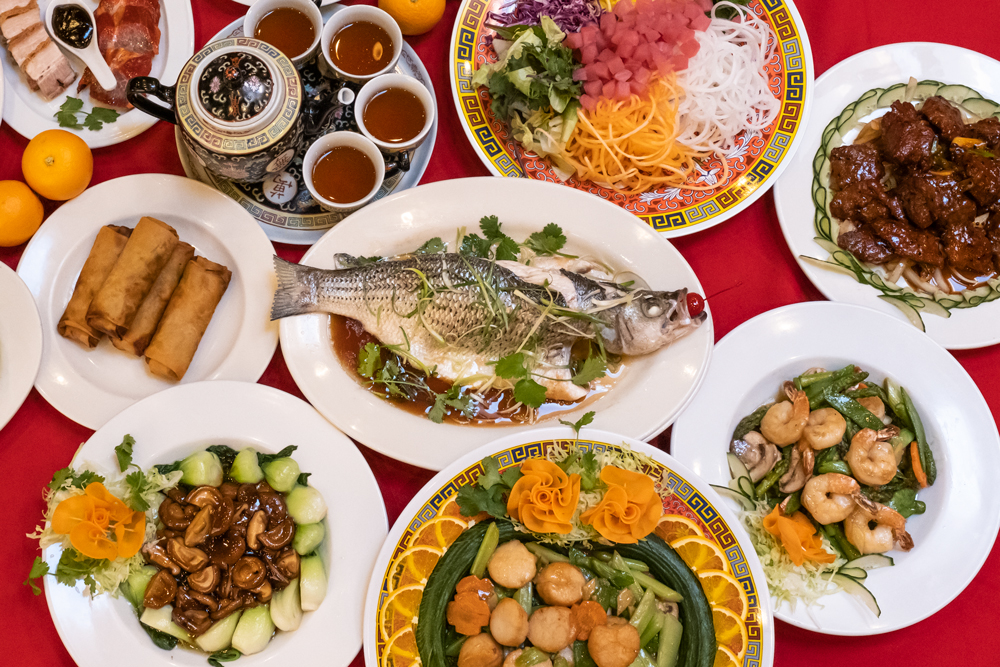The Chinese Lunar New Year is February 12, and celebrations are all about bringing the family together, with festivities usually stretching out over the course of nearly three weeks. Susanna Wong Burgess of Oriental Wok says things will be a little different this year due to the pandemic. “It’s a muted celebration, but we’re a very optimistic family,” she says. “I think that with Chinese culture and the fact that it’s been around for thousands of years, there’s a lot of perseverance.”
The festivities begin with a meal among family and close friends on the eve of the Chinese Lunar New Year. The table is fully covered with traditional, lucky foods that symbolize abundance, wealth, and good fortune. The feast has many courses, from the lo hei salad, and pot stickers to noodles and steamed fish. And there is always enough food for leftovers the next day, so the luck never runs out.
While there won’t be any elaborate parades featuring the lion dance (a tradition that scares off evil spirits) and no firecrackers, the meal will be sure to bring in enough luck for the new year. And after the crazy year we’ve had, we all could certainly use it.
Check out our photo essay, by Chris Pasion, depicting a traditional Chinese Lunar New Year meal at Oriental Wok:

Photograph by Chris Pasion
The meal begins with the lo hei salad, which the entire family tosses together as a symbol of unity and togetherness. The salad is topped with raw fish, a lucky symbol in Chinese culture.

Photograph by Chris Pasion
Pot stickers and spring rolls resemble small, golden Chinese ingots and symbolize little nuggets of wealth and good fortune.

Photograph by Chris Pasion
Lettuce wraps (san choy bow) represent a lively spirit. The pork dish on the left is served with hoisin sauce and is one of the more auspicious items on the menu. It’s also common for fruits such as oranges to be served with the meal, as they symbolize fruitfulness. Their circular shape, an essential shape in Chinese culture, represents harmony.


Scallops and mushrooms resemble small coins. They are served with vegetables whose green color symbolizes jade, a precious stone to Chinese culture.

Photograph by Chris Pasion
Noodles are an essential part of the meal that represents longevity, prosperity, and hopes for a long life. They are served whole and unbroken and are also commonly eaten on birthdays.

Photograph by Chris Pasion
The Chinese word for shrimp, Xiā, is a homophone that sounds like laughter. “You always make sure to each eat a shrimp dish or two to bring in happiness for the new year,” Susanna says.

Photograph by Chris Pasion
The chicken stands for health and is always served whole. It sits atop shrimp chips. The main proteins of the Chinese New Year meal are served whole to represent family unity and togetherness.

The center plate of the meal is the steamed fish, which represents surplus, abundance, and prosperity. It symbolizes good luck from the beginning of the year to the end of the year, head to tail. Much like the chicken, the fish is always served whole.




Facebook Comments